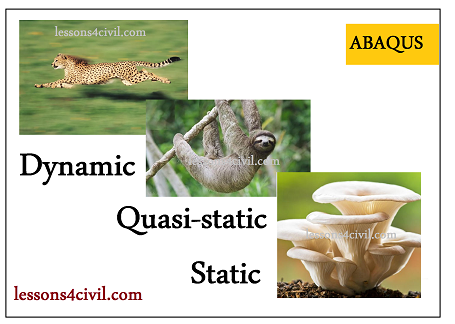Static, quasi-static and dynamic
Static, quasi-static and dynamic properties
These technical terms are usually a bit confusing for beginners and occasional users. This article is aimed to explain the differences and assumptions of each term.
A static problem is when acceleration is zero. Therefore, based on newton law the sum of all forces is equal to mass multiplied by zero. In other words in a static problem mass can be ignored. Under this condition, the particles are at rest.
In some cases load is applied very slowly and as a result deformation occurs at a very slow rate. In such cases the inertia force is so small that it can be ignored. Sa good example for a quasi-static problem is when a slope is subjected to earthquake loading. Since the deformation happens slowly we can analyze it with quasi-static approach. To do this, we consider a horizontal additional force in the equilibrium of forces instead of the exact loading of earthquake. But the tricky part of this method is how to define an equivalent static load that represent the actual loading of the dynamic loading. Several codes and international standards have proposed many criteria to estimate the amount of equivalent force for different loading cases.
Finally, if the loading is applied quickly the amount of inertia force would be considerable and we have to conduct a dynamic analysis to analyze the effect of loading on the structure.



Comments